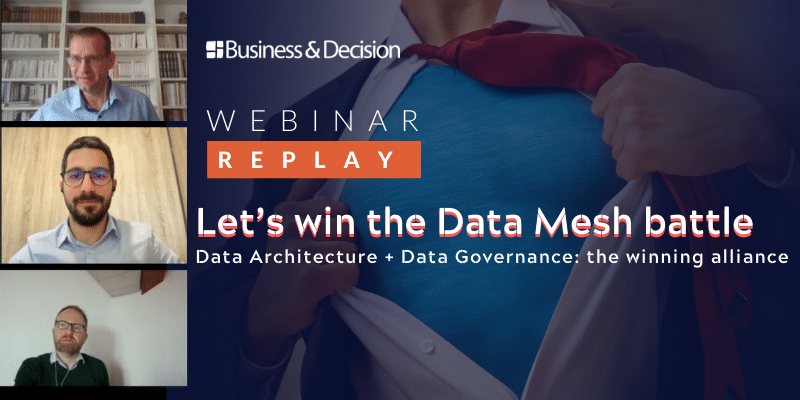CRM, or the art of managing customer relationships, is a concept that is familiar to all – but what if this art could be generally applied to all of a company’s assets? We will explain in detail in this article why xRM, which has become a strategic brick for vendors, is being increasingly implemented in companies and organizations. So what exactly does this acronym stand for? Are we in the face of a real revolution or a simple CRM evolution?

We will provide a first level of answers to these questions by describing xRM principles and by positioning this new generation of solutions, namely with respect to existing software packages and customized solutions.
xRM: definition
xRM means “eXtended” or “Anything” Relationship management. The traditional management of sales, marketing, customer service (etc.) processes born out of CRM was recently brought to completion by being extended to include the management of all business processes: the management of suppliers, partners, customers, employees, etc.
This type of process management is made possible by building business applications based on a common platform and using shared resources (interfaces, processes, access management, etc.).
xRM is thus the management of all the relationships that a company may have through centralised, shared and governed business applications.
In figures
96% : All companies, or nearly all of them (96%), have started taking steps to improve their processes. (Source: survey conducted by CXP Group amongst 153 entrepreneurs from all activity sectors)
88% of decision-makers consider digital transformation to be a major challenge. (Source: EBG/EY barometer on digital transformation within organisations)
xRM: unitary approach or global approach?
Our experience in consulting has led us down numerous business and IT avenues.
This has allowed us to observe that many companies still operate in silos, and that the most common reflex when faced with a need is to meet it by adopting a unitary approach, through specific developments. There are several reasons for this. The ones most often evoked being to save time and money…Unfortunately, this is a mistake since all solutions, no matter how well designed, evolve!
The major fallacy lies usually in considering a solution’s ownership cost as being limited to the cost incurred during its initial building phase and not taking into account all of the solution’s maintenance and upgrade costs.
At Business & Decision, we think that the opportunity to implement a more global platform should systematically be explored, and xRM solutions are an option to be considered.
xRM solutions are particularly interesting because they are halfway between software packages, which are often not very flexible and dictate processes, and specific developments which provide more adapted responses but on a case-by-case basis.
So, what are the finer details of this solution’s principles?
Principles of the xRM solution
xRM solutions that we integrate are based on a platform with 2 dimensions:
- a digital transaction dimension that will help customise interaction with the solution: forms, workflow management, etc.
- a data dimension that will be the hidden part of the solution and that will integrate the business model and all of the solution’s data.
These 2 dimensions are complemented by a third cross-functional one that will help configure the interface and manage rights and authorizations.
From a technical point of view, xRM platforms use Active Directory-type identification and authentication standards. These platforms are highly operable with real-time interfacing, and with most systems currently used by companies.
Regardingarchitectures, xRM solutions do not escape the pervasiveness of the cloud with deployments increasingly geared towards this type of architecture.
Finally, xRM solutions natively store information on data movements and facilitate data auditing to ensure compliance with applicable legislation, namely with respect to personal data requirements (GDPR).
xRM: customer experience feedback
1. Digitalisation of the purchase process for the procurement department of a public institution
- Sector: public institution operating in the industrial and commercial field
- Challenges: digitalisation of the purchase process and optimisation of the management of purchase performance
- Goals
- Significant reduction of multiple entries
- Improved data reliability
- Data security
- Data consolidation and interrogation
- Solution: implementation of an xRM solution and a Datavisualization solution in a Microsoft environment
- Benefits for users:
- Optimization of time spent carrying out low added value activities
- Optimization of the quality and security of generated data
- All-round vision of the purchase process
- Multi-factor analyses of purchasing policies’ efficiency
2. Digitalisation of the condition monitoring process for a company in the energy sector
- Sector: multinational company in the energy sector
- Challenges: digitalization of the condition monitoring process in order to optimise the company’s profitability
- Goals
- Developing a new application based on the existing platform
- Increasing the developed solution’s go-to-market
- Data centralization and standardization
- Solution: implementation of an xRM solution on a Salesforce platform
- Benefits
- Standardization of the facility management process for the various deployment countries
- Centralization of data on a current and governed platform
- Easier collaboration between the different departments
- Optimization of time spent monitoring the management process
xRM thus provides a credible response to the challenge that is transforming and digitalizing all business processes. Moreover, these solutions are true accelerators that will help business departments meet their need for reactivity. The integration of these solutions into shared platforms also helps position IT departments as suppliers of cross-functional service offerings whilst keeping these solutions’ total ownership cost under control.
The development of xRM will help equip business processes with tools in a much simpler way. It demands however, that special attention be paid to the implementation of governance and potential organizational impacts. As companies that have chosen this generalized approach have emphasized the importance of involving senior management and, in particular, the CDO prior to the deployment of these solutions.
















Comment (1)
Your email address is only used by Business & Decision, the controller, to process your request and to send any Business & Decision communication related to your request only. Learn more about managing your data and your rights.